Around 150 people died in the recent train accident near Kanpur. The passengers of Indore-Patna Express were in deep slumber, when some 14 coaches of the train were derailed, apparently due to a rail fracture. It is one of the worse rail accidents of recent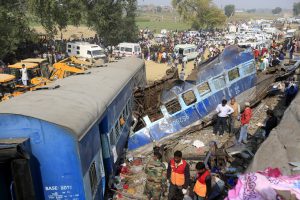 times, almost equally in casualties as that of Gyaneshwari Express in which some 150 had died in 2010, when the train had been derailed by Maoists in West Bengal. The scale of deaths and injuries makes the current accident, one of the worst in the history of Indian Railways. Sadly, going by the things as they are, this accident won’t certainly be the last “major one” in India’s transport sector.
times, almost equally in casualties as that of Gyaneshwari Express in which some 150 had died in 2010, when the train had been derailed by Maoists in West Bengal. The scale of deaths and injuries makes the current accident, one of the worst in the history of Indian Railways. Sadly, going by the things as they are, this accident won’t certainly be the last “major one” in India’s transport sector.
The travesty is that after every such incident, a set of actions/reactions follow almost in an autonomous mode. The opposition will bay for blood, the experts will decry the state of railways, the media will highlight all the unfulfilled promises and commitments, and the rail minister will set up a committee to investigate, promising strictest action possible. As the days pass and the dust settles down, the accident will become a statistic, invoked only in times of similar accidents, largely as an illustration of how “no lessons are ever learned”.
But then running Indian Railways is by no means an easy task. Sample these stats; 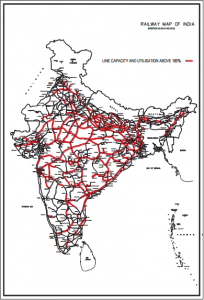 railways have a network of more than 64000 kms in length. It runs around 7000 commuter trains; 12000 long-distance trains and 6000 freight trains this network daily. Around 22 million passengers commute over the network each day. That is the sheer size and scale of this network. Given, the sheer scale, an accident like this in a few years should not raise much eyebrows, after all even Six Sigma allows you a few faults in a million, doesn’t it? But it does and should, because the faults in Indian Railways system can have ghastly repercussions. Imagine, it was a rail fracture in the Kanpur accident (a crack that is a few inches wide on the metal track) that killed so many and injured so many more. Faults on railways are always a killer. Thus, there is just no excuse for them.
railways have a network of more than 64000 kms in length. It runs around 7000 commuter trains; 12000 long-distance trains and 6000 freight trains this network daily. Around 22 million passengers commute over the network each day. That is the sheer size and scale of this network. Given, the sheer scale, an accident like this in a few years should not raise much eyebrows, after all even Six Sigma allows you a few faults in a million, doesn’t it? But it does and should, because the faults in Indian Railways system can have ghastly repercussions. Imagine, it was a rail fracture in the Kanpur accident (a crack that is a few inches wide on the metal track) that killed so many and injured so many more. Faults on railways are always a killer. Thus, there is just no excuse for them.
Realising the dire state of the railways, the minister Suresh Prabhu had proposed to invest ₹ 1,27,000 crore over 2015-19 in safety work, which includes track renewal. In addition to ₹1,02,000 crore to be spent on the locomotives, coaches, etc. And such steps were not the first ones. The previous government had appointed a committee under Anil Kakodkar to enhance railway safety.
Yet, in spite of all the ‘supposed’investment in safety and all the great plans, the real problem lies in the very manner in which the railways is run. The way the organisation (for a want of a better term) is structured, it is doomed for disaster and going bust in the days 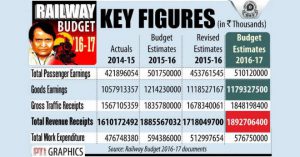 to come. Indian Railways (IR) is right now like a patient that is afflicted with tuberculosis, the symptoms are all there. But if we only concentrate on the manifestation and ignore the ailment, the patient is going to eventually die. The prognosis for IR is similarly dour. And here’s why:
to come. Indian Railways (IR) is right now like a patient that is afflicted with tuberculosis, the symptoms are all there. But if we only concentrate on the manifestation and ignore the ailment, the patient is going to eventually die. The prognosis for IR is similarly dour. And here’s why:
IR is living beyond its pockets — for every 100 bucks that it earns, the transporter is actually spending some 114 bucks. A deficit of straight 14%, that’s crazy isn’t it?
And can you guess what the biggest reason for this business anomaly is, it is the bloody manpower. Don’t get it? Sample this: Continue reading

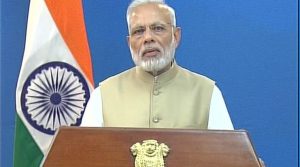 dour looking PM then in the 20 mins made an announcement that sent the whole country in a tizzy. He announced a war on black money with almost immediate demonetization of 500 & 1000 Rupee notes. “The arrangement of buying and selling through existing 500 and 1000 notes will not be available. These will be just worthless piece of paper”.
dour looking PM then in the 20 mins made an announcement that sent the whole country in a tizzy. He announced a war on black money with almost immediate demonetization of 500 & 1000 Rupee notes. “The arrangement of buying and selling through existing 500 and 1000 notes will not be available. These will be just worthless piece of paper”.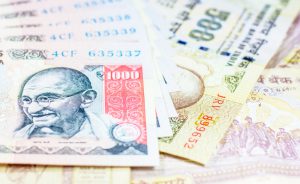 word spread, the exchange stalled. No one was ready to touch the currency with a barge pole. Shopkeeperrs would smile indulgently on being offered these notes. Outside ATMs, there was a huge queue of people, withdrawing 400 bucks at a time. Ditto, long queues at petrol pumps, as people tried to use the notes to tank up their vehicles. Even on the television, you could all these people standing outside ATMs and petrol pumps trying to lay their hands on whatever 100 or 50 they could lay their hands on. People across the board were confused, irritated, and even angry at the way their Tuesday night had been laid waste. But yet, almost all were in agreement that it was a bold, necessary and welcome move by the government. There was hardly a soul on the road, who did not support or complement PM Modi on this move.
word spread, the exchange stalled. No one was ready to touch the currency with a barge pole. Shopkeeperrs would smile indulgently on being offered these notes. Outside ATMs, there was a huge queue of people, withdrawing 400 bucks at a time. Ditto, long queues at petrol pumps, as people tried to use the notes to tank up their vehicles. Even on the television, you could all these people standing outside ATMs and petrol pumps trying to lay their hands on whatever 100 or 50 they could lay their hands on. People across the board were confused, irritated, and even angry at the way their Tuesday night had been laid waste. But yet, almost all were in agreement that it was a bold, necessary and welcome move by the government. There was hardly a soul on the road, who did not support or complement PM Modi on this move.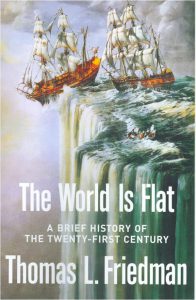 quite a simple book talking about the state of affairs of the world, especially in connection with globalization. The book speaks of how the world is coming together as one big place from Denver to Dalian to Bangalore. It was meant to be a chronicle of our times, and a sort of prognosis of the things that are yet to come. Friedman reaped rich rewards from his book, traveling across the globe, giving talks and discussing the subject.
quite a simple book talking about the state of affairs of the world, especially in connection with globalization. The book speaks of how the world is coming together as one big place from Denver to Dalian to Bangalore. It was meant to be a chronicle of our times, and a sort of prognosis of the things that are yet to come. Friedman reaped rich rewards from his book, traveling across the globe, giving talks and discussing the subject. and Mexico for the “greatest jobs theft” in the history of the world. According to him, Indians and other nationals were gobbling up American jobs. Indians were no more a threat, but rather scheming thieves that stole and cheated. Now how could that narrative change so quickly? What happened to that ‘flat world’ that was meant to be equal for all
and Mexico for the “greatest jobs theft” in the history of the world. According to him, Indians and other nationals were gobbling up American jobs. Indians were no more a threat, but rather scheming thieves that stole and cheated. Now how could that narrative change so quickly? What happened to that ‘flat world’ that was meant to be equal for all